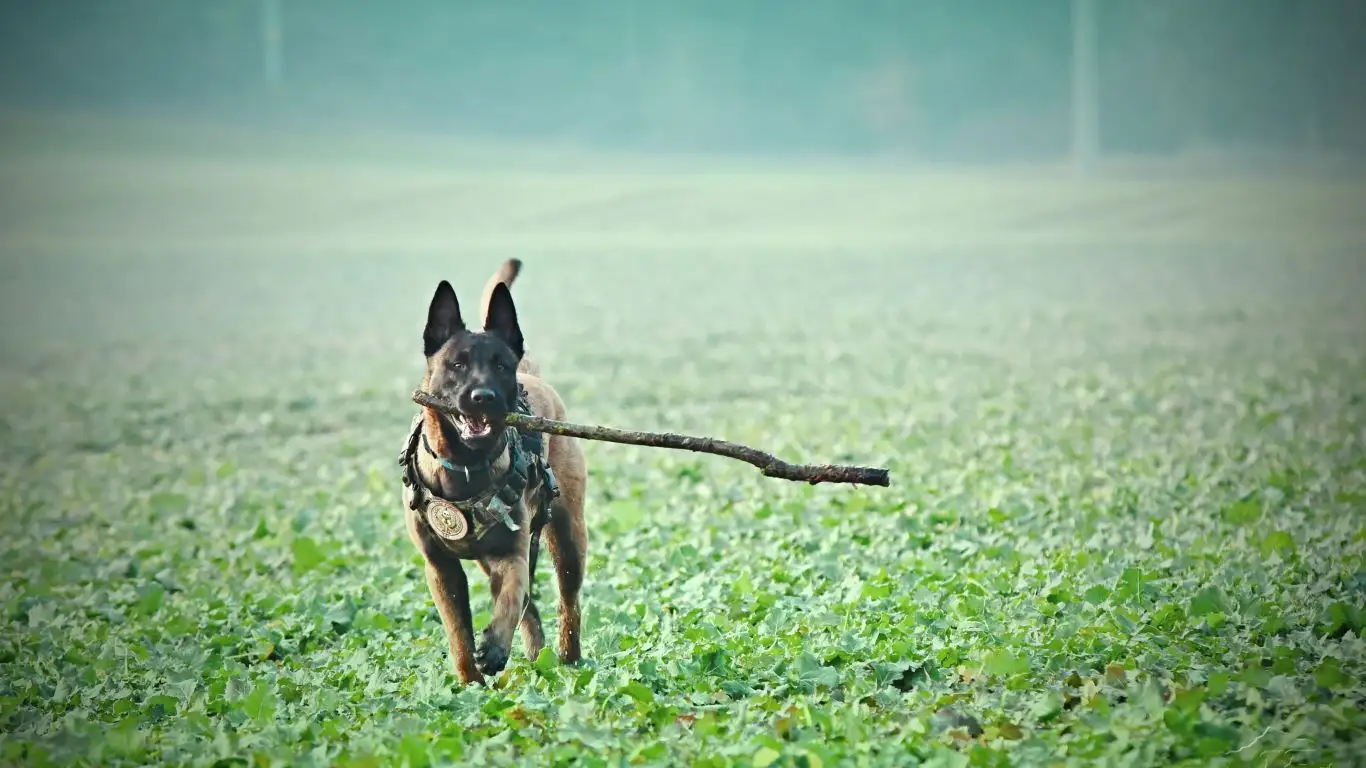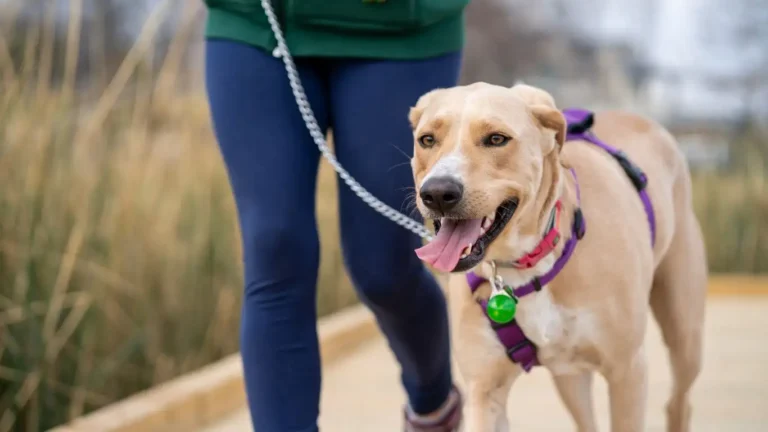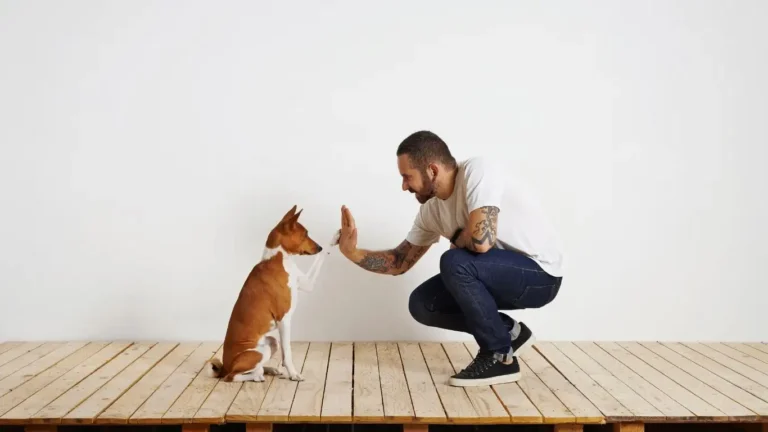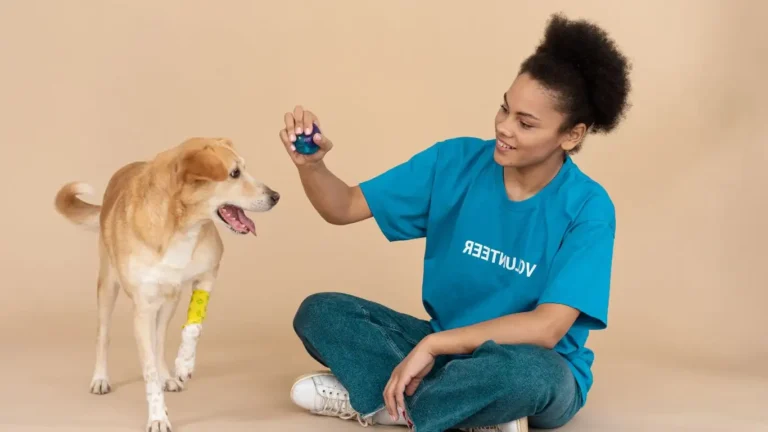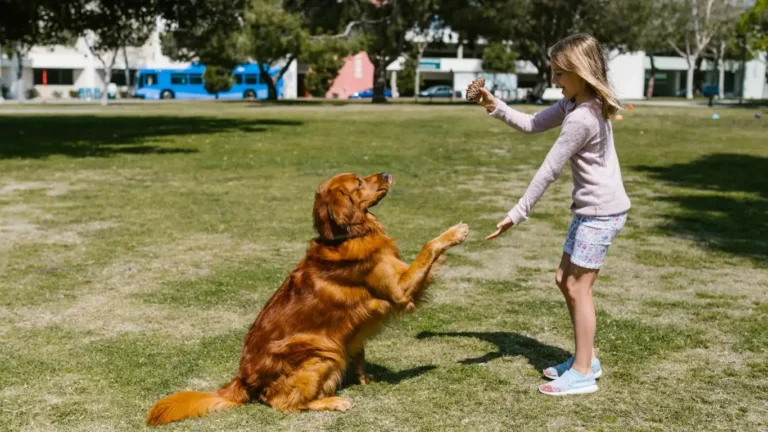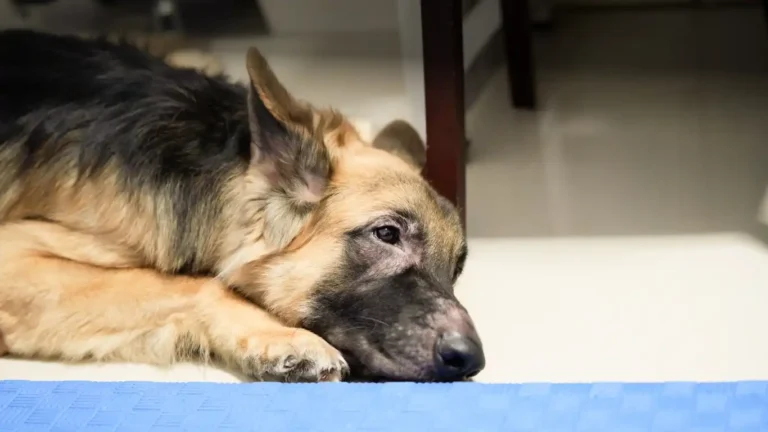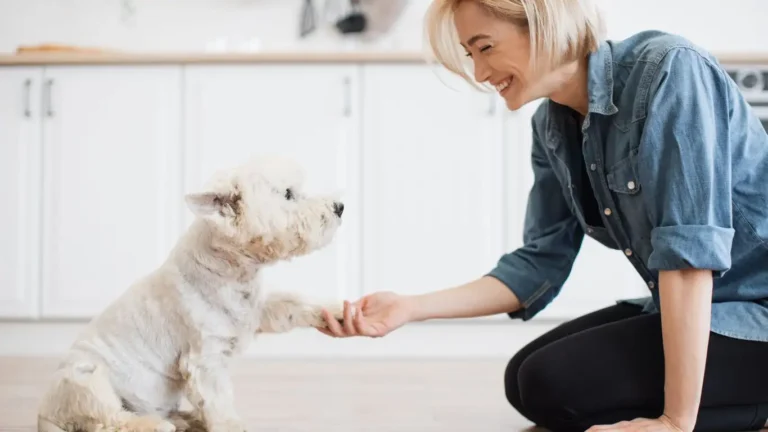Train Your Dog to Wait Patiently During Grooming – Expert Tips That Work
Let’s be real—grooming day doesn’t always feel like a spa day for our dogs. If you’ve ever wrestled with a wet, squirming pup in your bathroom or watched your client’s dog panic at the sight of a nail clipper, you’re not alone. I’ve been there too. As someone who’s worked hands-on as a Canine-Assisted Therapy Trainer, one of the most practical and often overlooked skills I teach is how to train a dog to wait patiently during grooming. Trust me, when a dog knows how to stay calm and chill during grooming, it’s a game-changer for both of you. It’s not just about good manners—it’s about trust, safety, and making grooming a positive experience instead of a dreaded event.
Why Waiting Patiently During Grooming is a Big Deal
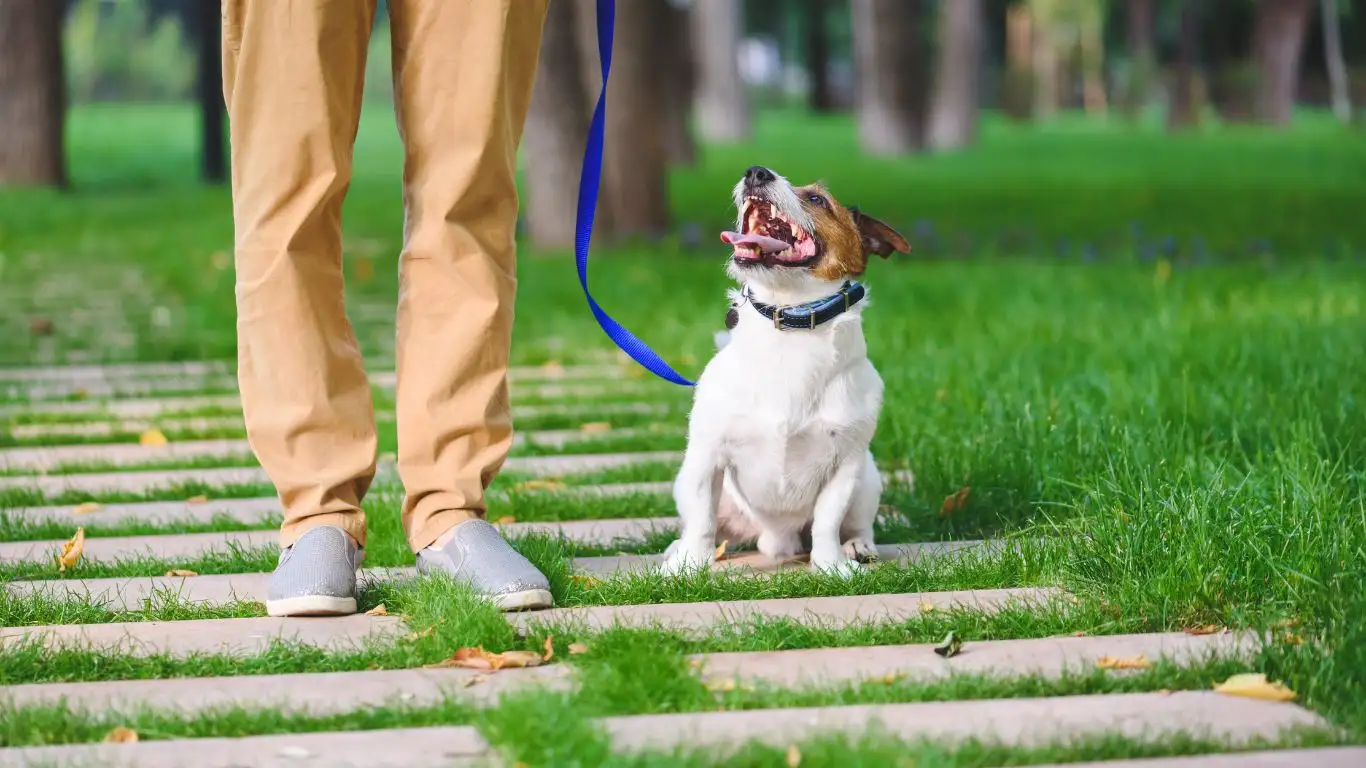
Let’s think beyond the basics for a sec. Grooming isn’t just about brushing out mats or trimming nails. It’s also a massive trust exercise between you and your dog. When dogs learn to wait calmly during these sessions, it lowers stress for everyone involved—pet parents, groomers, and of course, the dog.
In my experience, teaching a dog this skill has ripple effects across their entire behavior profile. You’ll see more confidence, more tolerance to touch, and a much stronger bond overall. Plus, it seriously reduces the chance of injuries. A flailing paw during nail trims? No thanks. A calm, still pup? Yes, please.
Understanding What ‘Waiting Patiently’ Looks Like
Before we dive into the how-to, let’s break down what we’re actually aiming for. A dog that waits patiently during grooming typically:
- Stays in one position (sitting, standing, or lying down) without constant wiggling
- Doesn’t try to bite or pull away when touched with tools
- Shows relaxed body language—soft eyes, calm breathing, loose posture
- Responds calmly to repositioning or gentle restraint
Patience isn’t about turning your dog into a statue. It’s about creating an environment where they feel safe, and they know what’s expected of them.
Start Small: Foundation Skills First
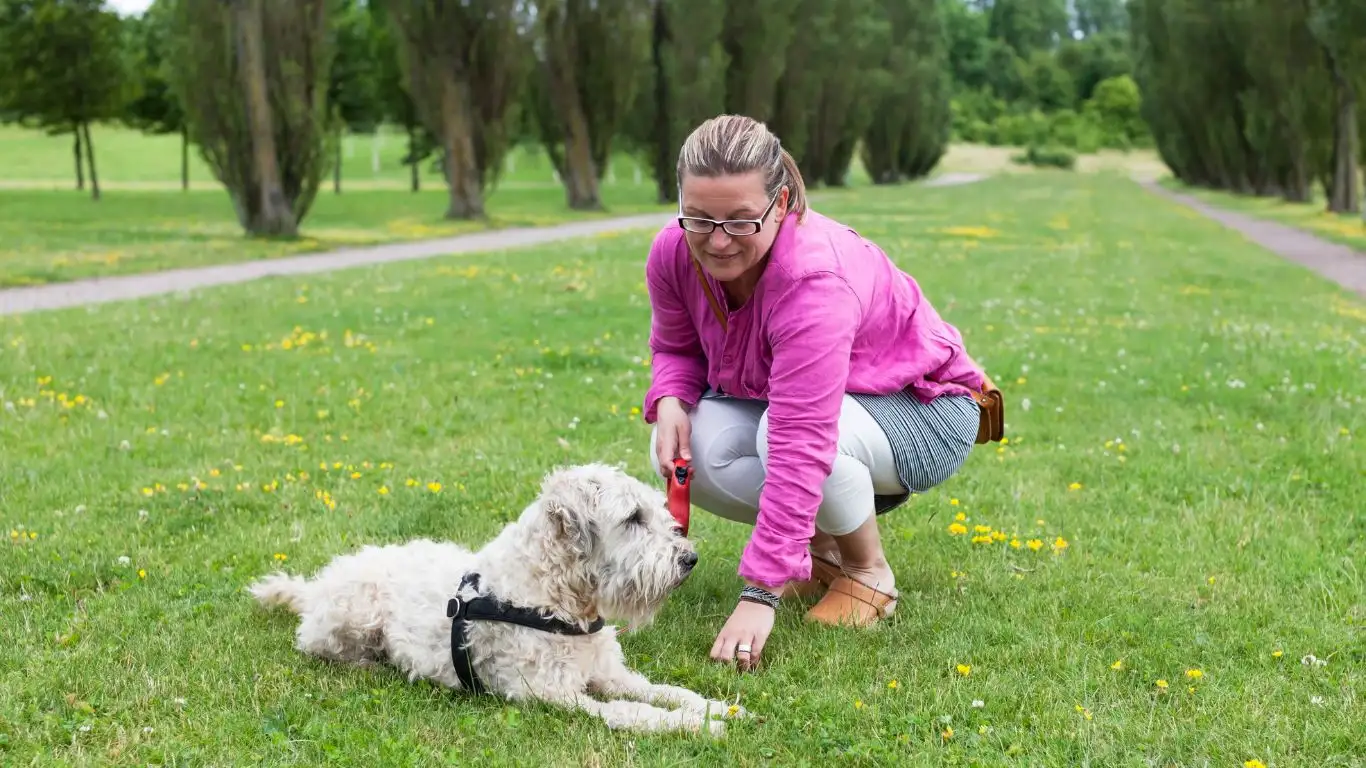
I can’t stress this enough—foundation matters. You can’t expect your dog to calmly tolerate a loud clipper or brush yanks if they haven’t mastered the basics. Here’s what I usually start with in training sessions:
- Touch Desensitization: Gently handle their paws, ears, and tail daily. Pair it with praise and treats. Start with 5-second touches and build from there.
- Duration Work: Train your dog to stay in a sit or down for increasingly longer periods. Use a timer and reward small increments.
- Marker Training: Teach a marker word like “yes” or use a clicker to mark calm, still moments. This builds clarity.
- Introduce Tools Gradually: Bring out the brush or nail trimmer during regular training—not just on grooming day.
In therapy dog prep, we call this kind of early work “setting the emotional tone.” The goal is to get your dog thinking, “Oh, this is no big deal,” instead of panicking at the first touch.
Using Positive Reinforcement to Build Trust
Now here’s where my background in canine-assisted therapy really shines through. Building trust through consistent, positive reinforcement is key. Dogs don’t just learn to wait—they learn to want to wait, because it leads to something good.
Use high-value treats and lots of verbal praise. If your dog loves toys or affection more than food, use that. The reward needs to matter. I once worked with a Golden Retriever named Cooper who’d only settle during grooming if he got a squishy squeaky frog afterward. You better believe that frog became part of every session!
Creating a Calm Environment
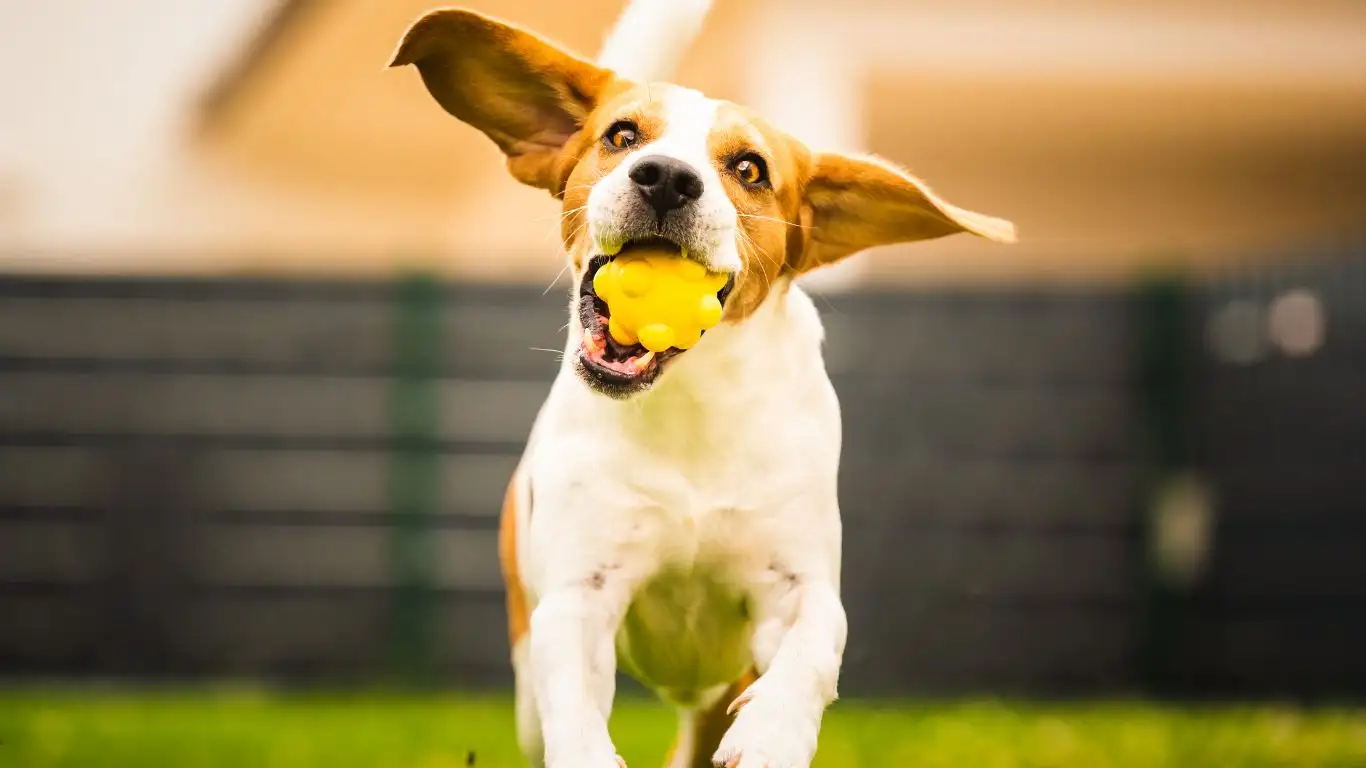
This step often gets skipped, but it’s a game-changer. Your dog picks up on the environment’s energy. If it’s chaos, they’ll match it. If it’s chill, they’re more likely to stay grounded. Here’s how I set the tone:
- Consistent Spot: Use the same location for grooming to build familiarity and reduce surprises.
- Soft Background Noise: A little classical music or white noise helps. Seriously—it works.
- Non-slip Surface: A yoga mat or textured rubber mat helps dogs feel physically secure.
- Aromatherapy: A dab of lavender essential oil in the room (never directly on your dog) can help mellow things out.
It’s about creating a vibe that says, “This is safe. This is routine. You’ve got this.” Dogs are incredible at picking up on those cues.
When to Start Grooming Patience Training
The earlier, the better. If you’ve got a puppy, you’re in the sweet spot—start touching and introducing tools immediately. But if you’re working with an older dog or a rescue who’s had bad experiences, patience and pacing are everything. I’ve worked with dogs who had serious grooming trauma, and with the right steps, even those pups learned to trust again.
Just remember—don’t rush it. You’re playing the long game here, and every moment of progress matters.
Introducing Grooming Tools the Right Way
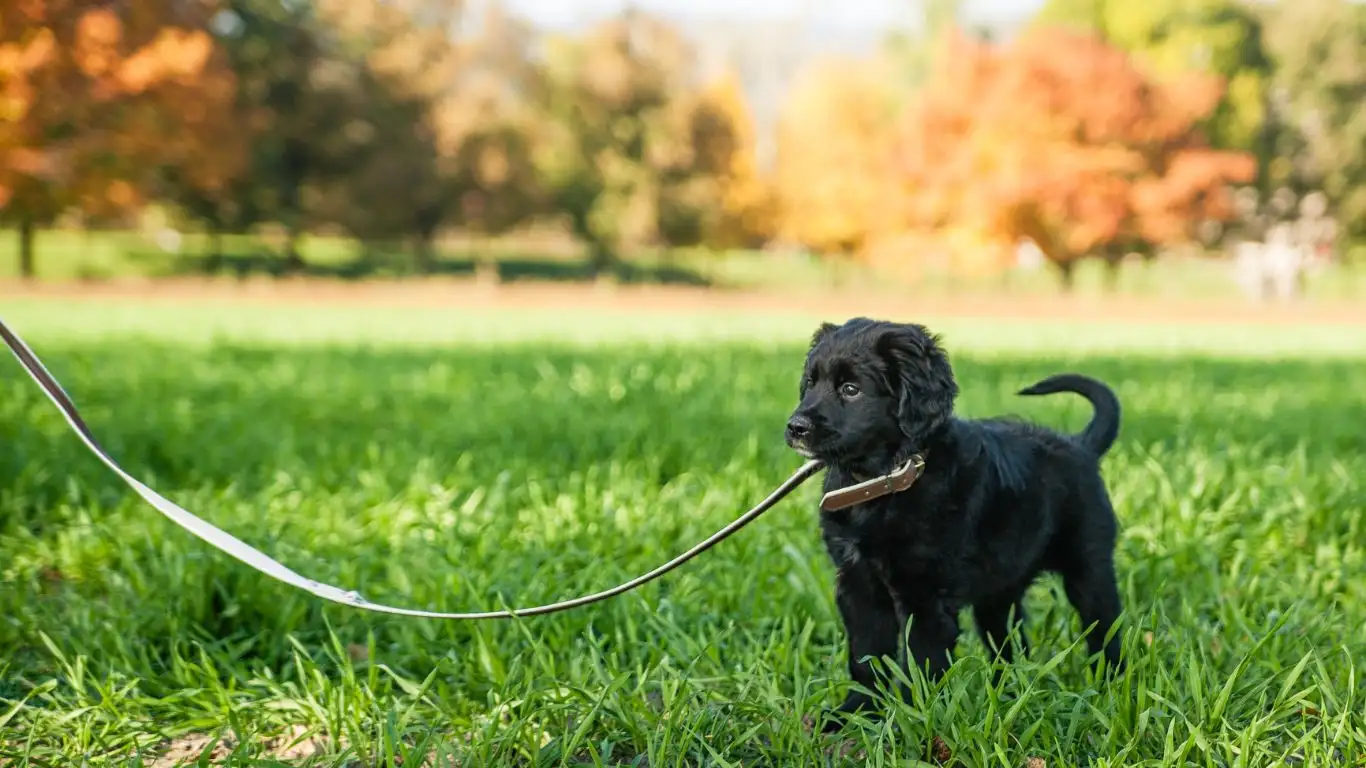
Alright, so your dog is starting to get the hang of staying chill and trusting your touch. That’s a huge win. But here’s where things can either keep going smoothly or totally derail—introducing grooming tools. From clippers to brushes to those intimidating nail grinders, each tool can be a little spooky for a dog who’s not used to it.
I always tell my clients (and this comes straight from years of hands-on work with therapy dogs): don’t just pop out the clippers and go to town. That’s like someone sneaking up behind you with a buzzing razor. Instead, make each tool part of your training environment before you ever use it for real.
Start With the Senses
Dogs explore with their nose first, so let them sniff and inspect grooming tools without any pressure. Lay them out during a calm moment and let your dog come to them. I often use a treat scatter game around the tools—nothing fancy, just a few soft bites nearby—so they associate the sight and smell with good vibes.
Next, introduce the sound. Turn on the clippers or nail grinder across the room at first. No touching yet—just sound. Gradually move closer over time. One of my therapy pups, Luna, used to bolt at the sound of a nail grinder. We worked up from playing the sound on my phone at low volume to the real thing over a few weeks. Slow and steady made all the difference.
Simulate the Motions
Here’s a trick that’s been golden in my training sessions: use a neutral object like a wooden spoon or a soft brush to “mimic” grooming motions. Lightly tap or stroke your dog where you’d normally brush, clip, or trim. Praise them for holding still or relaxing.
Over time, this builds muscle memory. Your dog learns, “Hey, this is just part of the routine. Nothing bad is happening.” When you finally switch to the real grooming tools, it’s way less of a shock.
Handling Wiggly Moments Without Stress
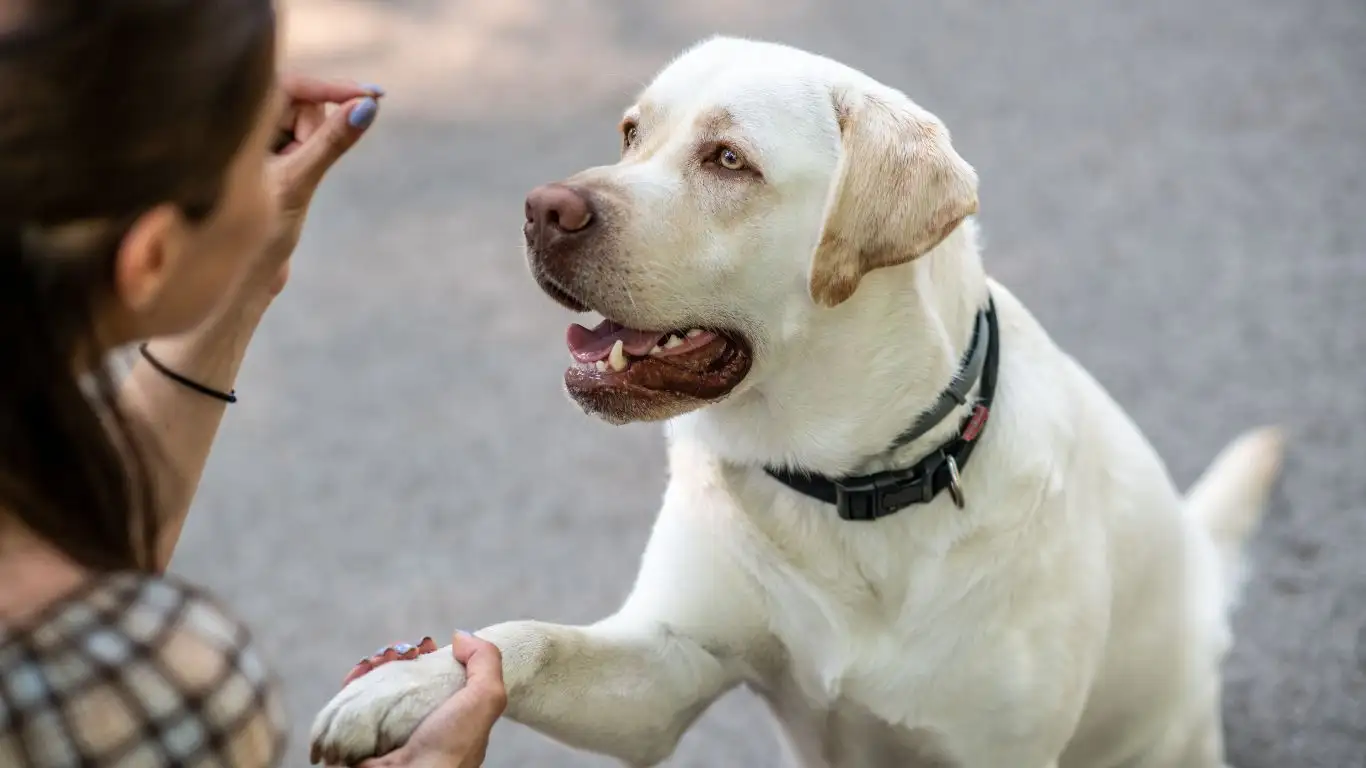
Let’s face it—dogs aren’t statues. Even the calmest ones will have a wiggly day now and then. The key is not to react with frustration, but with calm consistency. You want your dog to know that even if they move, it doesn’t get them out of the task. But also, that they’re not in trouble either.
What I do (and teach others to do) is use what’s called a reset moment. If the dog gets up or starts squirming, I calmly stop the grooming, ask for a sit or down, give them a breath, and then resume. It’s kind of like pressing pause and saying, “Let’s try that again.”
And please, never force them into a hold that feels scary. Gentle guidance is one thing, but restraint can erode trust fast. In my therapy work, we always prioritize consent-based handling—it’s more sustainable, more ethical, and frankly, way more effective.
Timing Your Sessions Just Right
This might sound obvious, but short sessions are your best friend. I mean, how many of us want to sit through a two-hour grooming session? Same goes for dogs. When I’m training a new pup, I keep initial sessions to just 5–10 minutes max. As they get more tolerant, we stretch that out gradually.
Here’s a rough idea of how I build it up over time:
- Week 1–2: 5-minute sessions, touching paws, ears, and tail with hands only
- Week 3–4: 10-minute sessions with grooming tools introduced (no real grooming yet)
- Week 5–6: 15–20 minutes with light grooming—brushing, wiping ears, or pretending to clip nails
That pacing might feel slow, but in my experience, it prevents meltdowns later on. You’re laying a solid foundation—and your future self will thank you.
Turning Grooming Into a Bonding Moment
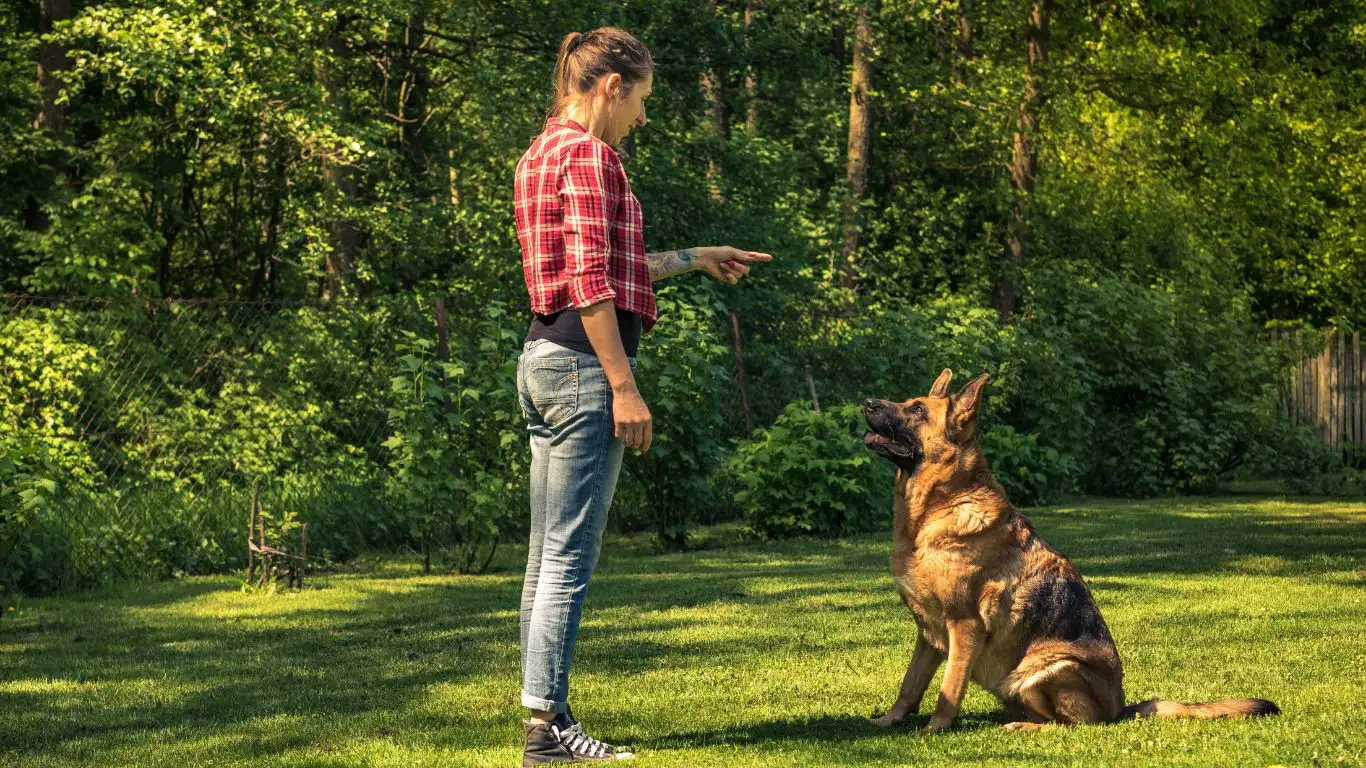
This is one of my favorite parts. Grooming doesn’t have to feel like a chore. Once your dog learns to wait patiently and the stress is gone, it can actually become a moment of connection. I’ve had clients tell me it’s now their favorite quiet time with their dog—kind of like how we feel after a massage or a spa day.
I’ll often use this time to check in emotionally with my dogs. How’s their skin? Any lumps or bumps? Are they showing signs of anxiety or discomfort? When you remove the chaos, you can tune into your dog so much more deeply. It’s a great moment to build trust and affirm your role as their safe person.
Use a Grooming Routine Checklist
Especially if you’re training a dog to get used to grooming, having a simple routine checklist helps a ton. It creates predictability—and dogs love that.
- Calm environment set up (mat, tools out, music playing)
- Ask for a sit or down before starting
- Touch paws, ears, tail as a warm-up
- Introduce tool (one at a time), let them sniff or hear it
- Do a short grooming action (brush, wipe, clip)
- Pause and reward calm behavior
- Repeat 2–3 times max, then end on a high note
This builds a rhythm your dog can count on. And hey, it helps you stay calm too—especially if grooming used to feel like a wrestling match.
Celebrate Small Wins
Seriously, don’t skip this. If your dog let you brush for two whole minutes today without fussing? That’s a win. If they stayed still for one paw’s worth of nail trimming? Huge. I always tell clients, “Celebrate like you’re training a puppy on day one—even if they’re five years old.”
Dogs thrive on progress, not perfection. And when you make them feel like rockstars for even tiny improvements, their confidence soars. I’ve seen it happen over and over again—in therapy training, home grooming, even with shy rescues. That moment when they realize, “I can do this,” is magic.
Managing Setbacks and Building Long-Term Grooming Patience
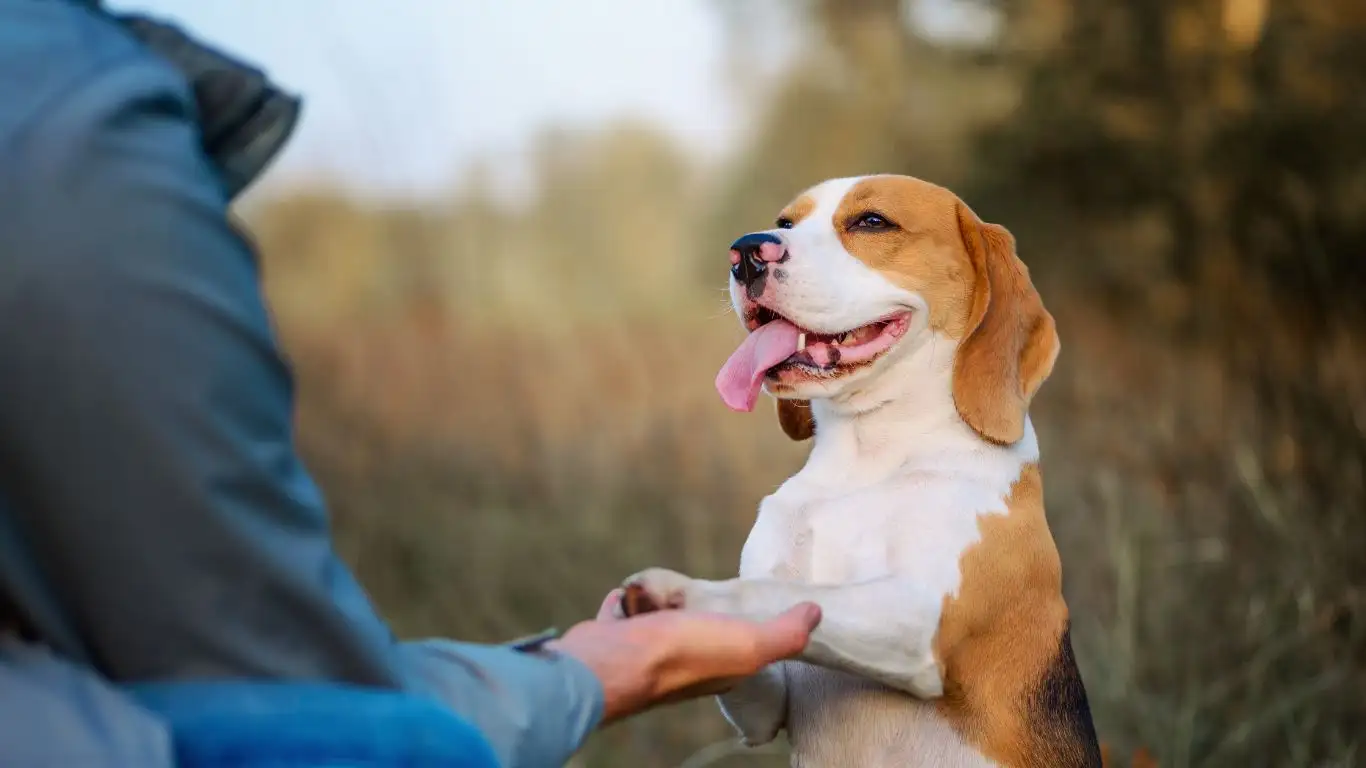
By now, you’ve got a solid routine in place, your dog is familiar with the tools, and things are moving in the right direction. But let’s be real—progress isn’t always linear. Even well-trained dogs have off days. Maybe they’re not feeling it, or maybe that thunderstorm last night left them a little jittery. It happens.
I remember working with a rescue named Benny—adorable little guy, but grooming made him spiral. One week, he nailed his brushing session. Next week? Total meltdown. That’s when I learned the power of adjusting expectations without throwing in the towel.
Don’t Panic If You Backslide
If your dog regresses a bit, take a breath and go back to basics. It doesn’t mean your training failed—it just means your dog needs a refresher. Revisit simple touch games, short grooming exposures, and loads of praise. Honestly, those “redo” moments often strengthen the bond even more.
Think of it this way: your dog is learning a lifelong skill. And like us, they’ll have good days and bad days. Your calm and consistency are what guide them through.
Tracking Progress Can Keep You Motivated
I always suggest keeping a grooming log—just a quick note in your phone or a journal. Track how long your dog tolerated the session, what tools you used, what went well, and what didn’t. Over time, you’ll spot patterns and know when to push forward or when to pull back.
It also helps to involve your vet or groomer in the conversation. If your dog has skin sensitivities or physical issues that make grooming uncomfortable, professionals can provide insight that tailors your training plan even better. (And shout out to the amazing vets I’ve worked with who helped me uncover hidden pain that was showing up as grooming resistance!)
Enlisting Help: When to Bring in a Pro

Sometimes, even with all the best DIY training in place, it’s worth bringing in backup. There’s no shame in looping in a certified dog trainer or behaviorist—especially if you’re dealing with fear, aggression, or major anxiety around grooming.
In fact, for dogs with a history of trauma or reactivity, professional support can be the breakthrough moment. Look for trainers who use force-free, positive reinforcement methods. I recommend checking the directory at PetMD or AKC for certified professionals who specialize in behavior modification.
And if grooming tasks are becoming too overwhelming for you or your dog, a professional groomer with experience in handling sensitive dogs can be a game-changer. Just make sure they’re using humane practices. Feel free to ask about how they handle fearful dogs—your pup deserves a groomer who sees them as more than just a job.
Signs It’s Time to Get Outside Help
- Your dog growls, snaps, or tries to bite during grooming, even after desensitization
- They shut down completely—flattening, trembling, or refusing to move
- You feel anxious or overwhelmed just thinking about grooming sessions
- Your progress has completely stalled for several weeks
None of these signs are failures. They’re just signals that a little extra support might be needed—and that’s totally okay.
Setting Up Your Dog for Lifelong Grooming Success
Training a dog to wait patiently during grooming isn’t a one-and-done skill. It’s an ongoing practice that evolves as your dog ages. Puppies might need different handling than seniors. Seasonal changes, health issues, or new environments can shift your dog’s comfort levels, too.
I work grooming into my regular routine with my dogs—even if I’m not actually grooming them. I’ll grab the brush while we’re hanging out, lift a paw for fun, or rub their ears while watching TV. These little touchpoints keep them familiar with the sensation, so grooming never feels like an “event.”
Also, never underestimate the power of regular health checks. If your dog suddenly becomes sensitive to grooming, there might be something deeper going on—joint pain, an ear infection, dental problems. Keeping up with routine vet visits (check NIH or your local clinic for wellness guidelines) ensures your training efforts aren’t competing with hidden discomfort.
Bonus Tip: Grooming as Enrichment
Here’s a little mindset shift: grooming can actually be a form of mental enrichment. You’re asking your dog to stay still, focus, and engage calmly—those are huge wins for impulse control and attention span.
When we frame grooming this way, it becomes more than hygiene. It becomes a skill-building, trust-building, relationship-deepening part of your life together. And honestly, there’s something beautiful about that.
References
Disclaimer
This article is intended for educational and informational purposes only. It is not a substitute for professional veterinary advice, diagnosis, or treatment. Always seek the advice of your veterinarian or a qualified canine behaviorist with any questions you may have regarding your dog’s health or behavior.
